-
 bitcoin
bitcoin $122025.899241 USD
-2.12% -
 ethereum
ethereum $4488.068729 USD
-4.11% -
 bnb
bnb $1315.348019 USD
8.65% -
 tether
tether $1.000457 USD
0.03% -
 xrp
xrp $2.875326 USD
-3.69% -
 solana
solana $222.043604 USD
-4.07% -
 usd-coin
usd-coin $0.999682 USD
0.00% -
 dogecoin
dogecoin $0.249887 USD
-5.62% -
 tron
tron $0.337379 USD
-2.59% -
 cardano
cardano $0.827763 USD
-5.06% -
 hyperliquid
hyperliquid $45.774531 USD
-2.43% -
 chainlink
chainlink $22.079309 USD
-5.87% -
 ethena-usde
ethena-usde $1.000156 USD
0.02% -
 sui
sui $3.482566 USD
-3.57% -
 stellar
stellar $0.386982 USD
-4.92%
How do I interpret the red and green circles in the SAR indicator?
The SAR indicator uses red and green dots to signal trend direction and potential reversals, helping crypto traders time entries and exits amid volatility.
Sep 16, 2025 at 06:18 pm
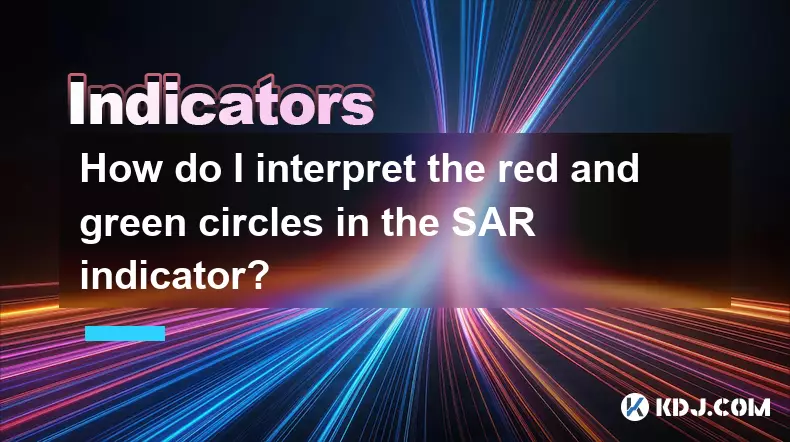
Understanding the SAR Indicator in Cryptocurrency Trading
The SAR indicator, or Stop and Reverse indicator, developed by J. Welles Wilder, is a technical analysis tool widely used in cryptocurrency trading to identify potential reversals in price movement. Represented as a series of dots placed above or below the price on a chart, the SAR helps traders determine entry and exit points. The color of these dots—commonly depicted as red and green circles in many trading platforms—provides immediate visual cues about market momentum and trend direction.
Significance of Red and Green Circles
1. A green circle beneath the current price indicates that the SAR is signaling an uptrend. This suggests that bullish momentum is in control and traders may consider holding long positions or entering new buy orders.
- A red circle positioned above the price signifies a downtrend according to the SAR. This reflects bearish dominance and can prompt traders to consider shorting the asset or closing long positions.
- The shift from a green to a red dot, or vice versa, marks a potential reversal point. This flip is the core mechanism behind the 'stop and reverse' strategy, where traders exit one position and immediately enter another in the opposite direction.
- These colored markers simplify real-time decision-making, especially in the fast-moving crypto markets where volatility can trigger rapid changes in trend.
- While the colors enhance readability, it's essential to remember they represent the same underlying calculation: the SAR value shifting relative to price action.
Practical Application in the Crypto Market
1. In a volatile cryptocurrency like Bitcoin, SAR dots can help define trailing stop-loss levels. For instance, when green dots appear below rising prices, placing stop-loss orders just below each dot can protect gains during an uptrend.
- During sharp corrections, such as those seen in altcoin crashes, red SAR dots above the price warn of continued downward pressure. Traders might use this signal to avoid catching falling knives or to initiate short positions on exchanges supporting margin trading.
- Combining SAR with volume indicators increases reliability. A color change accompanied by high trading volume strengthens the validity of the reversal signal.
- On shorter timeframes like 15-minute or hourly charts, SAR signals may generate more frequent but less reliable reversals due to noise. Using it alongside moving averages can filter out false signals.
- In ranging markets, SAR can produce whipsaws—rapid alternations between red and green. Recognizing consolidation phases through tools like Bollinger Bands or RSI helps avoid overreacting to SAR flips during sideways movement.
Risks and Limitations of SAR in Crypto
1. Cryptocurrencies often exhibit parabolic moves not followed smoothly by SAR, which relies on steady trends. Sudden spikes may leave SAR dots far behind, reducing their effectiveness as real-time guides.
- The default acceleration factor in SAR may not suit highly volatile digital assets. Adjusting parameters like the step and maximum value can improve responsiveness but requires backtesting.
- Relying solely on SAR colors without confirming context—such as macroeconomic news or on-chain metrics—can lead to poor trade decisions in unpredictable crypto environments.
- Flash crashes or pump-and-dump schemes common in low-cap tokens can trigger misleading SAR reversals. These anomalies distort the typical price progression the indicator assumes.
- Traders must treat SAR as part of a broader strategy, integrating candlestick patterns, support/resistance levels, and sentiment analysis for robust outcomes.
Frequently Asked Questions
What does a green SAR dot mean when it appears after several red ones?It indicates a potential trend reversal from bearish to bullish. The SAR has flipped below the price, suggesting upward momentum may be resuming. This could signal an opportunity to exit shorts or enter longs, particularly if confirmed by increasing volume.
Can the SAR indicator predict exact price tops or bottoms?No. The SAR follows price and reacts to changes rather than predicting them. It identifies reversals after they begin, making it a lagging indicator. Its strength lies in managing trades during ongoing trends, not forecasting turning points in advance.
Is the SAR equally effective across all cryptocurrencies?Effectiveness varies. Major coins like Bitcoin and Ethereum with strong trending behavior tend to respond better to SAR. Low-liquidity altcoins with erratic price action often generate false signals, reducing SAR’s reliability in those markets.
How should I adjust SAR settings for crypto trading?Start with the default (0.02 step, 0.2 max), then test variations on historical data. For faster assets, increasing the step size makes SAR more sensitive. However, excessive sensitivity increases whipsaw risk, so balance is critical.
Disclaimer:info@kdj.com
The information provided is not trading advice. kdj.com does not assume any responsibility for any investments made based on the information provided in this article. Cryptocurrencies are highly volatile and it is highly recommended that you invest with caution after thorough research!
If you believe that the content used on this website infringes your copyright, please contact us immediately (info@kdj.com) and we will delete it promptly.
- BlockDAG, DOGE, HYPE Sponsorship: Crypto Trends Shaping 2025
- 2025-10-01 00:25:13
- Deutsche Börse and Circle: A StableCoin Adoption Powerhouse in Europe
- 2025-10-01 00:25:13
- BlockDAG's Presale Buzz: Is It the Crypto to Watch in October 2025?
- 2025-10-01 00:30:13
- Bitcoin, Crypto, and IQ: When Genius Meets Digital Gold?
- 2025-10-01 00:30:13
- Stablecoins, American Innovation, and Wallet Tokens: The Next Frontier
- 2025-10-01 00:35:12
- NBU, Coins, and Crypto in Ukraine: A New Yorker's Take
- 2025-10-01 00:45:14
Related knowledge
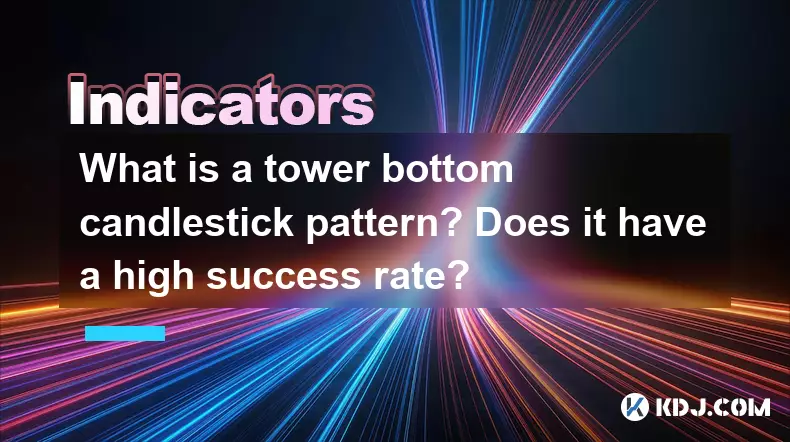
What is a tower bottom candlestick pattern? Does it have a high success rate?
Sep 22,2025 at 07:18am
Tower Bottom Candlestick Pattern Explained1. The tower bottom candlestick pattern is a reversal formation that typically appears at the end of a downt...
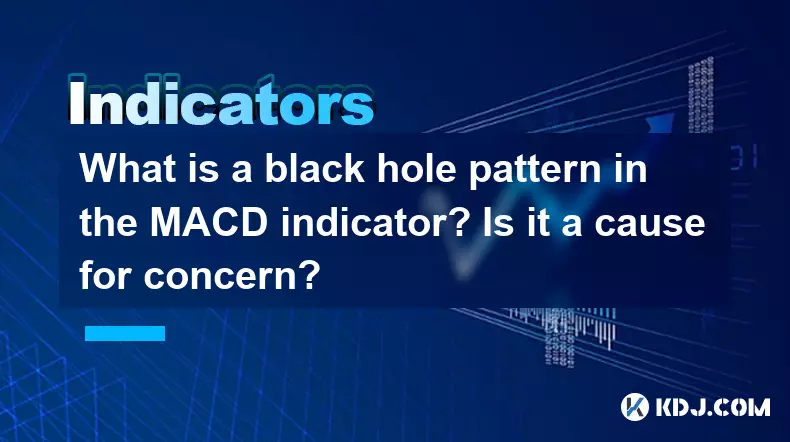
What is a black hole pattern in the MACD indicator? Is it a cause for concern?
Sep 21,2025 at 06:54pm
Bitcoin's Role in Decentralized Finance1. Bitcoin remains the cornerstone of decentralized finance, serving as a benchmark for value and security acro...

How can I use the psychological line (PSY) to determine market sentiment?
Sep 17,2025 at 02:19pm
Understanding the Psychological Line (PSY) in Cryptocurrency TradingThe Psychological Line, commonly referred to as PSY, is a momentum oscillator used...
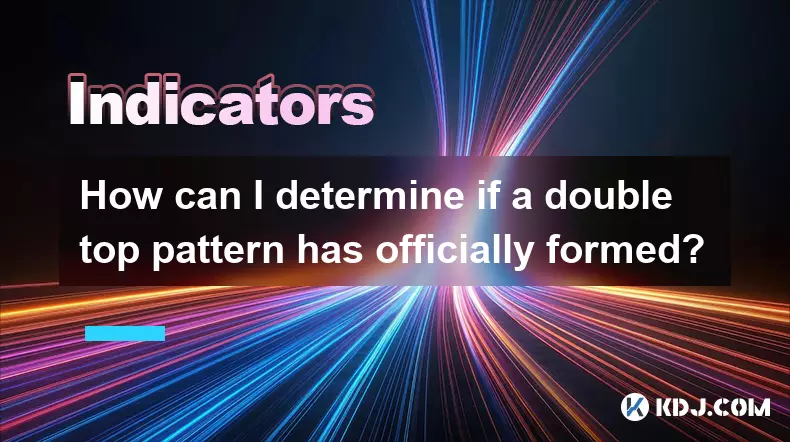
How can I determine if a double top pattern has officially formed?
Sep 21,2025 at 03:18am
Understanding the Structure of a Double Top Pattern1. A double top pattern consists of two distinct peaks that reach approximately the same price leve...
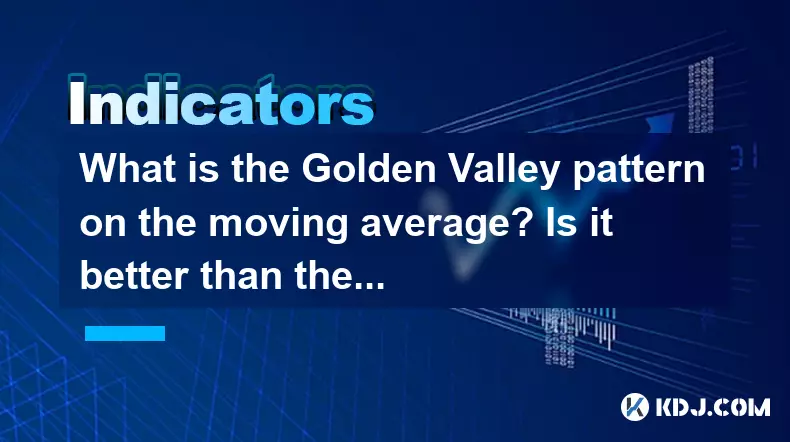
What is the Golden Valley pattern on the moving average? Is it better than the Silver Valley pattern?
Sep 21,2025 at 02:54pm
Understanding the Golden Valley Pattern in Moving Averages1. The Golden Valley pattern is a technical formation observed in cryptocurrency price chart...

What does a death cross of the RSI in the strong zone (above 50) mean?
Sep 17,2025 at 10:54pm
Understanding the Death Cross in RSI Context1. The term 'death cross' is traditionally associated with moving averages, where a short-term average cro...

What is a tower bottom candlestick pattern? Does it have a high success rate?
Sep 22,2025 at 07:18am
Tower Bottom Candlestick Pattern Explained1. The tower bottom candlestick pattern is a reversal formation that typically appears at the end of a downt...

What is a black hole pattern in the MACD indicator? Is it a cause for concern?
Sep 21,2025 at 06:54pm
Bitcoin's Role in Decentralized Finance1. Bitcoin remains the cornerstone of decentralized finance, serving as a benchmark for value and security acro...

How can I use the psychological line (PSY) to determine market sentiment?
Sep 17,2025 at 02:19pm
Understanding the Psychological Line (PSY) in Cryptocurrency TradingThe Psychological Line, commonly referred to as PSY, is a momentum oscillator used...

How can I determine if a double top pattern has officially formed?
Sep 21,2025 at 03:18am
Understanding the Structure of a Double Top Pattern1. A double top pattern consists of two distinct peaks that reach approximately the same price leve...

What is the Golden Valley pattern on the moving average? Is it better than the Silver Valley pattern?
Sep 21,2025 at 02:54pm
Understanding the Golden Valley Pattern in Moving Averages1. The Golden Valley pattern is a technical formation observed in cryptocurrency price chart...

What does a death cross of the RSI in the strong zone (above 50) mean?
Sep 17,2025 at 10:54pm
Understanding the Death Cross in RSI Context1. The term 'death cross' is traditionally associated with moving averages, where a short-term average cro...
See all articles










































































